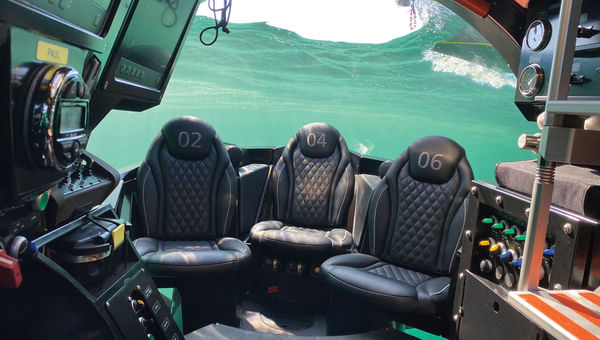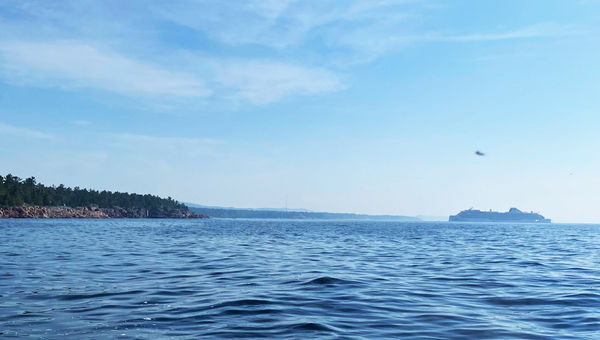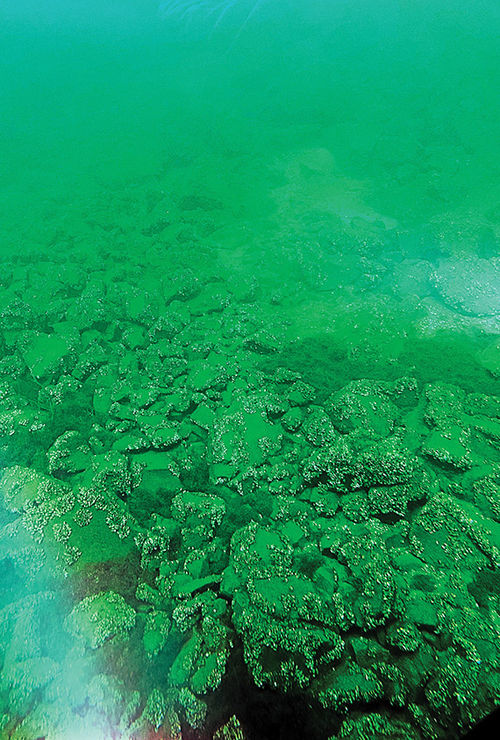I feel like I could be in a spaceship looking at an otherworldly planet, perhaps the home of aliens.
Small, shelled creatures cling to rocks in a world carved by ancient continental ice sheets that were once 1 to 2 miles tall.
That’s my view from inside a 10-ton submarine that has just sunk beneath the surface of the Georgian Bay in Lake Huron. This submarine is yellow and, of course, named Paul, in a hat-tip to the Beatles. Its brother John floats nearby.
I’m on a seven-day Great Lakes sailing on the Viking Octantis, Viking’s first expedition ship, which winters in Antarctica and summers on the lakes.
It took some work to get down here. Anyone interested in riding the submarine, which is complimentary for guests, has to attend a briefing that includes detailed requirements, including bringing 96 hours’ worth of medications in the event you get stuck, as that is how long the vessel can provide air in an emergency. Passengers must also be agile enough to climb down a ladder into the submarine without any help and scoot themselves into one of six seats.

The Octantis’ yellow submarines, named after members of the Beatles, are equipped to take six guests each into the depths of the oceans and lakes the ship sails and can also collect data samples. Photo Credit: TW photo by Andrea Zelinski
As I am finding out, this excursion is not for the faint of heart. Those warnings scare off at least a dozen people who walk out after the presentation without signing up for a seat. But I gladly step on a scale for the crew to jot down my weight so they can calculate and balance the sub for each dive.
It is several days into the cruise before guests can experience a dive, due to the Jones Act, which prohibits vessels including Viking’s submarines from operating in U.S. waters. The line must wait until we reach Canada. On this dive, we’re on the lake just outside Killarney, Ontario.
When it’s my turn for a 35-minute expedition, I gear up in a life vest, waterproof pants and boots provided by Viking. I’m part of a group of six passengers, and if anyone had bowed out at the last minute, it would have canceled the dive for all of us: The submarine needs to balance passengers’ weight, a collective max of up to 1,500 pounds, across the two sides of the submarine, so any absence would throw off that equilibrium.

The Octantis in Lake Huron’s Georgian Bay during a Great Lakes cruise. Photo Credit: TW photo by Andrea Zelinski
Into the green depths
I am the first one to climb down the ladder into the sub. I’m surprised at how tight the space is while hardly believing I’m about to actually ride in a submarine.
The sub sloshes around on the bay’s surface, and I am mesmerized by the waves splashing against the domes on either side. Once all six of us have settled in, our pilot, Mark Andrew, climbs in and places on his lap what looks like an original Nintendo controller with two joysticks, and slowly lowers us to the lake bed.

Small, shelled creatures cling to rocks on the lake floor of Georgian Bay, as seen from a submarine excursion from the Octantis. Photo Credit: TW photo by Andrea Zelinski
As we descend, I notice everything around me has a tinge of green: the water, my seatmate’s face and the back of my hands. That’s because the color red disappears underwater, and the deeper we go, the greener everything becomes.
Andrew’s voice is slow and steady when he announces that we’ve reached about 30 feet below the water’s surface. Yesterday, the visibility underwater was so poor, he said, it was like “driving through coffee.”
About 10 centimeters of glass separates me from the water. While this ride is for fun, the submarine also takes water samples and helps scientists research what is happening below the water’s surface, especially in the polar regions.
“We know more about the surface of the moon than we do about Antarctica,” says our pilot.
We’re now 48 feet down and roam over rocks and silt that the shelled creatures cling to. Depending on the location of the Great Lakes dives, guests might spot remnants of shipwrecks.
I imagine what the seascape might offer in Antarctica, and find out later that guests on the sub’s first dive there this season saw a giant phantom jelly fish, only the 111th observation recorded in history, Viking said.
The gentle motion of the submarine makes me wish I had taken medicine for motion sickness. As we slowly return to the surface, the sun reappears and red returns to our color palette. Bubbles from under the sub swirl up the domed glass and we’re back at the surface. The sunbeams are back dancing through the water.
I’m relieved when I take my first breath of fresh air. Yet, I would happily do it all over again.
